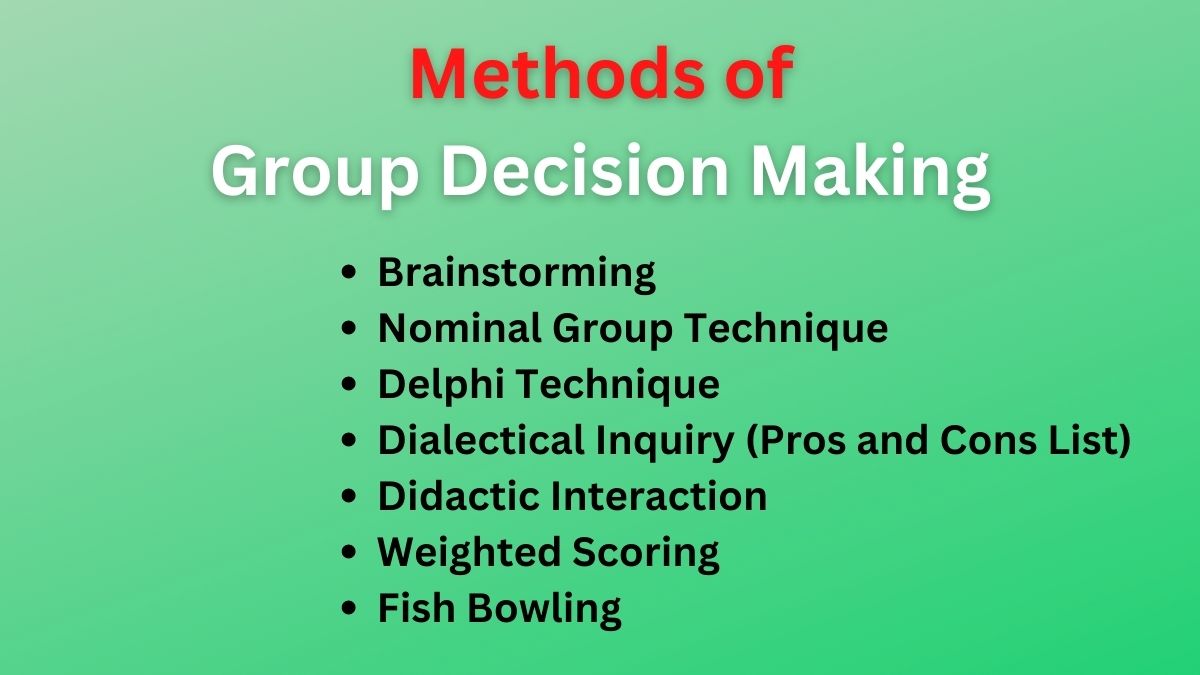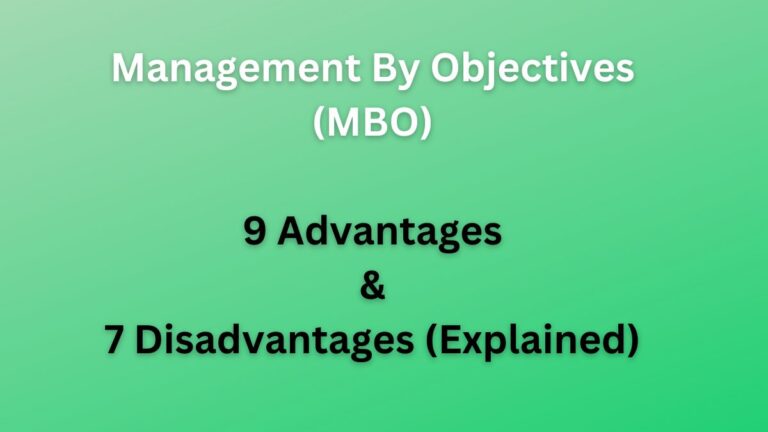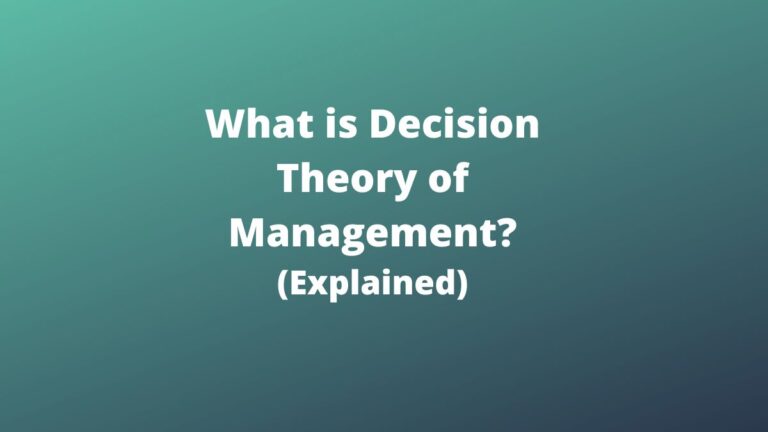7 Methods/Techniques of Group Decision Making [Explained]
Methods of Group Decision Making
Group decision-making is an effective tool for choosing an alternative that is right for complex situations. During your course of action in the organization, you have to make different decisions individually as well as in groups. Choosing the right methods or techniques while making a decision in a group is essential.
Following are some of the effective methods you can adopt while making any decision in groups.
Brainstorming
Literally, brainstorming is the process of group discussion to produce ideas or solve problems. The main objective of the brainstorming is to generate more possible solutions as possible and the evaluation and the decision-making are done after the brainstorming session is completed.
Participants in a brainstorming session speak forth their ideas or proposals. Here, there is no predetermined format for the discussion; instead, everyone engages in typical, unstructured conversation. The Group leader facilitates understanding and makes clear situations regarding the problem and decision-making criteria and expectations.
Group leaders then assist in the process of coming to conclusions or making decisions for organizational knowledge after all participants have first expressed their opinions, ideas, and solutions regarding the issues.
The major problem with this method of group decision-making is that many members may not be open to sharing their ideas in front of their senior members. Nowadays, using electronic means of communication with the internet like Messenger, Hangouts, Zoom, Viber, MicrosofTeams, etc. for brainstorming has prevailed.
Electronic media may limit brainstorming’s effectiveness because of poor internet connection but increases its application because it helps to remove hesitation in speaking in groups.
Nominal Group Technique
The nominal group technique is more structured than the brainstorming technique and takes one step further the brainstorming adding the voting process.
Same as brainstorming, at first, all group members present their ideas and opinions on a problem and they come to a conclusion through the voting process.
The term nominal refers to a group strategy that restricts conversation or human interaction throughout the decision-making process. Like in a typical committee meeting, the entire group is present physically, but each member works individually.
Read Also: Pros and Cons of Group Decisions
Each member is given the independence to vote on an alternative they think is right and can also explain why they chose the alternative. This method has structures that everyone follows.
Delphi Technique
Delphi technique though is a group decision-making process, but the members in this method do not meet each other at a place for discussion and making decisions. The individuals in the Delphi group are selected based on the specific knowledge and expertise of members in the matter of discussion.
Questions or subject matter for discussion or suggestion are asked to select members of the Delphi group independently using different electronic means such as Gmail.
Their views are recorded in successive stages, common views are recorded, and uncommon or different ideas are resent to the members for further justification or for new ideas. After getting the most agreeable suggestions or views on the subject areas, the decisions are made.
Dialectical Inquiry (Pros and Cons List)
Dialectical inquiry is a group decision-making technique that focuses on developing mutually contrasting ideas so that a detailed discussion on the subject matter is done. In other words, this approach encourages group members to create ideas that are competing with one another so that the best option can be chosen.
For effectiveness, total members are grouped into two groups, suggested to develop the best ideas, and asked to debate the advantages and disadvantages of their ideas. In addition, here, two group members discuss their ideas based on the pros and cons which is why this technique is also called a pros and cons list technique of group decision.
If there is only group decision-making, there will be a person for devil’s advocacy i.e. raising a potential problem with a proposed decision. After discussion between the two groups, the most agreeable course of action is selected.
Didactic Interaction
Didactic interaction is the same as a dialectical inquiry method but is a little different. These methods of group decision are only applicable to certain situations and when done effectively generate more pleasing solutions.
Didactic interaction can be used when the solution to a situation comes in two words “Yes or No”. This type of decision is typically a major one that will have a significant impact on the performance of the whole organization.
For example, organizations may opt for didactic interaction when changing their marketing strategy, adopting new technology, introducing a new product, etc Such decisions have a larger impact on organizational performance.
Also Read: Decision-Making Styles
Weighted Scoring
In the weighted scoring technique of group decision, team members analyze the alternative solutions to a problem. This method is used when believed that some alternatives are riskier to organizations while others are not.
Based on certain criteria such as cost to implement, risks, adoption, goals achievement rate, business value, etc. the alternative’s weight or impact on the firm is analyzed. After the weight of each alternative is scored the alternative that has the potential to create greater business value at a lower cost than the other is selected.
Fish Bowling
Fish bowling is another way of brainstorming that is more structured and concentrated. In this approach, the decision-makers are arranged in a circle with a single chair in the middle. One member of the group leader is invited to occupy the center seat and speak about the problem and possible solutions.
He can answer inquiries from the other group members, but there is no interfering conversation. After finishing his speech and ensuring that everyone understands his point of view, the participant in the center chair moves out of the spotlight and rejoins the circle. The second person is then asked to take a seat in the center and share his opinions in light of those previously spoken.
Based on the fresh concepts offered by the members, the members are free to ask the center questions. Up until the chair resigned, ideas expressed by prior center members also remained in the center. There can be no direct communication between group members; all communications must be between the center and the group.
Due to the fact that everyone is using the data and that all ideas put forth by the core members have been carefully considered, this group decision method leads to each member choosing a certain course of action. Once all the experts have shared their opinions, the entire group discusses the numerous suggestions and chooses the one that has the most support.
The Conclusion Tip…
All these 7 group decision-making methods have their own pros and cons which can affect your business performance. And, choosing these methods should be based on the nature of the problem, necessity, and availability of resources.
Read Next: What is MBO?
Sajan Kushmi is a content writer with more than 4 years of experience. He holds BIM Degree. He write on the topics related to Management, Marketing, and Entrepreneurship.






